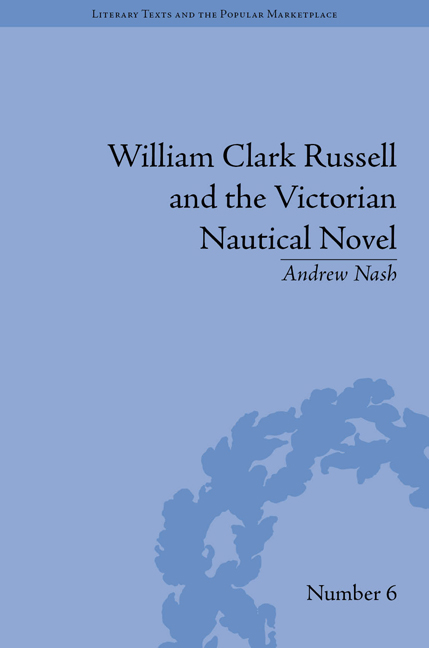Book contents
- Frontmatter
- CONTENTS
- Preface and Acknowledgements
- List of Figures and Tables
- Introduction
- 1 Sailor and Writer
- 2 Writing as a Woman
- 3 Finding the Sea
- 4 Writing the Sea: Genre and Theme
- 5 Writing the Sea: Women and Gender
- 6 Marketing the Sea: Serials
- 7 Marketing the Sea: Books and Publishers
- William Clark Russell: A Bibliography
- Notes
- Works Cited
- Index
7 - Marketing the Sea: Books and Publishers
- Frontmatter
- CONTENTS
- Preface and Acknowledgements
- List of Figures and Tables
- Introduction
- 1 Sailor and Writer
- 2 Writing as a Woman
- 3 Finding the Sea
- 4 Writing the Sea: Genre and Theme
- 5 Writing the Sea: Women and Gender
- 6 Marketing the Sea: Serials
- 7 Marketing the Sea: Books and Publishers
- William Clark Russell: A Bibliography
- Notes
- Works Cited
- Index
Summary
As I have argued in previous chapters, when Russell began writing sea stories he was confronted with a set of market obstacles. Since the 1840s, when the vogue for nautical novels ended, the genre had been relegated to popular cultural and physical forms. The fiction of W. H. G. Kingston, for example, was published mainly for the juvenile market. During the 1870s, when Russell's early sea stories were written, Kingston published many titles, including Ben Burton (1872), The Three Midshipmen (1873), and The Three Admirals (1877), all of which appeared in single-volume illustrated editions priced at 3s.6d. or 6s. One of Russell's great achievements was his restoration of the sea story to the main structures of the literary marketplace. Having begun his career convinced that the market could support only domestic fiction aimed at female readers, he discovered that sea stories, far from being restricted to juvenile or popular readerships, could be circulated in the same markets and the same bibliographical formats as the work of other leading novelists of the day. In fact, the publishing history of his books, like his serials, is highly representative of general trends in the fiction market. His publisher and agent successfully marketed his works by exploiting the tremendous range of markets and physical formats in which books could appear in the final quarter of the nineteenth century.
- Type
- Chapter
- Information
- William Clark Russell and the Victorian Nautical NovelGender, Genre and the Marketplace, pp. 153 - 182Publisher: Pickering & ChattoFirst published in: 2014



